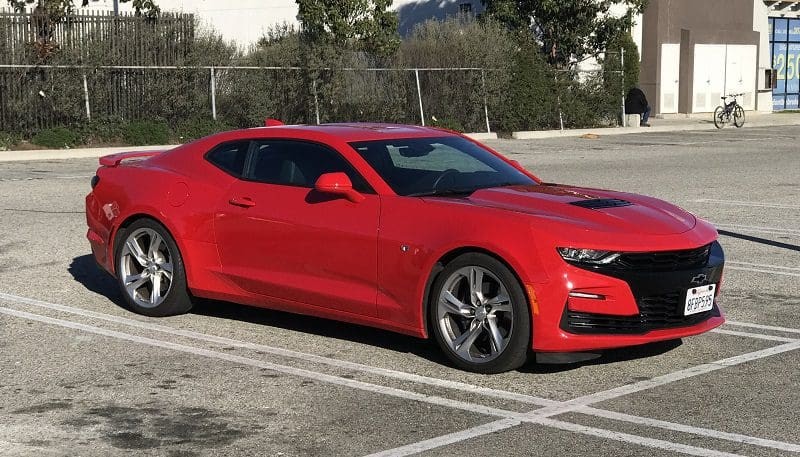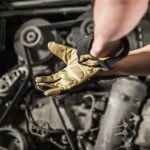Bose car audio systems are renowned for their premium sound quality, often factory-installed in many vehicle models. However, even high-quality speakers like Bose are susceptible to damage, and a blown speaker can severely degrade your in-car listening experience. A blown speaker doesn’t mean your entire system is ruined; often, it’s just one speaker that needs attention. Understanding how to diagnose and potentially repair a blown Bose car audio speaker can save you money and get your sound system back to its best.
Identifying a Blown Bose Speaker
Before attempting any repairs, it’s crucial to confirm that your speaker is indeed blown and not suffering from another issue, such as wiring problems or amplifier malfunction. Here’s how to diagnose a blown speaker:
-
Listen for Distortion: The most common symptom of a blown speaker is distortion, especially at higher volumes. You might hear crackling, buzzing, or a muddy sound where there used to be clear audio. This distortion will often be more pronounced in the frequencies that the damaged speaker is designed to reproduce (bass for woofers, high frequencies for tweeters).
-
Isolate the Problem Speaker: If you have multiple speakers, try to determine which one is causing the issue. Fade your car audio system to focus on individual speakers or speaker pairs (front/rear, left/right). Listen closely to each speaker at low and moderate volumes, then gradually increase the volume to identify when the distortion becomes noticeable.
-
Visual Inspection (If Accessible): Carefully inspect the speaker cone if it’s visible. Look for tears, cracks, or separations in the cone material or the surround (the flexible material connecting the cone to the speaker basket). Sometimes, physical damage is obvious. However, with Bose systems, speakers might be behind grilles or panels, making visual inspection difficult without disassembly.
This image shows the exterior of a 2018 Chevrolet Camaro SS, similar to a vehicle that might have a factory-installed Bose audio system. While the exterior is sleek, the audio system might require attention if speakers are blown.
- Smell Test (Use Caution): In some severe cases, a blown speaker might emit a burning smell. This is due to the voice coil overheating and potentially burning out. If you detect a burning smell from your speakers, it’s a strong indicator of damage. However, be cautious and don’t rely solely on smell, as other electrical issues could also produce odors.
Is Repairing a Blown Bose Speaker Possible?
Whether you can repair a blown Bose car speaker depends on the nature and extent of the damage. Here’s a breakdown:
-
Minor Damage to the Cone or Surround: Small tears or cracks in the speaker cone or surround might be repairable. Repair kits are available that include adhesives and patching materials specifically designed for speaker repair. However, this is a delicate process, and success isn’t guaranteed, especially with the precision engineering often found in Bose speakers.
-
Voice Coil Damage: If the voice coil is burnt out, which is a common cause of blown speakers due to overheating from excessive power or distortion, repair is generally not feasible for the average DIYer. Replacing a voice coil requires specialized skills and parts, and for Bose speakers, individual voice coils are not typically available for separate purchase.
-
Spider or Former Damage: Damage to the spider (the corrugated support structure at the base of the cone) or the former (the cylinder around which the voice coil is wound) also usually necessitates speaker replacement rather than repair.
Realistically, for most blown Bose car audio speakers, replacement is often the most practical and reliable solution. Attempting DIY repair on a complex Bose speaker, especially if the voice coil is damaged, can be time-consuming and might not restore the speaker to its original performance level.
Steps to Replace a Blown Bose Car Speaker
If repair isn’t practical or successful, replacing the blown Bose speaker is the next step. Here’s a general guide. Note: Specific steps will vary greatly depending on your vehicle make, model, and the location of the blown speaker. Always consult your vehicle’s repair manual or a professional for detailed instructions specific to your car.
-
Gather Necessary Tools and Materials:
- Replacement Speaker: Identify the exact model of your blown Bose speaker. You might need to check your vehicle’s documentation or contact a Bose or car audio specialist to find the correct replacement. Consider if you want to replace it with an OEM Bose speaker or explore aftermarket options.
- Basic Hand Tools: Screwdrivers (Phillips and flathead), socket set, panel removal tools (plastic trim tools are essential to avoid damaging interior panels).
- Wiring Connectors or Crimp Tool: Depending on the speaker and wiring harness, you might need connectors or a crimp tool to connect the new speaker.
- Wire Stripper/Crimper (possibly).
-
Safety First: Disconnect the Battery: Before working on your car’s electrical system, disconnect the negative terminal of your car battery. This prevents accidental shorts and potential damage to your audio system or car.
-
Access the Blown Speaker: This is often the most challenging part. You’ll likely need to remove interior panels, door panels, or dashboard components to access the speaker.
- Consult a Repair Manual or Online Guides: Search online for guides or videos specific to your car model and speaker location. Websites like YouTube and car-specific forums can be invaluable resources.
- Use Panel Removal Tools: Gently pry off plastic panels using trim tools to avoid breaking clips or damaging the plastic. Start at edges and work your way around.
- Remove Screws and Fasteners: Once panels are removed, you’ll likely find screws or bolts securing the speaker to the door or mounting location. Remove these carefully and keep them organized.
This image of drums symbolizes clear sound and audio fidelity. A blown speaker disrupts this clarity, making music sound distorted, unlike the crisp sound of well-tuned drums.
-
Disconnect the Old Speaker: Once you have access to the speaker, carefully disconnect the wiring harness connected to it. Note how the wires are connected (positive and negative terminals) or take a photo for reference before disconnecting. Some connectors have clips that need to be pressed to release them.
-
Install the New Speaker:
- Connect Wiring: Connect the wiring harness to the new Bose speaker, ensuring correct polarity (positive to positive, negative to negative). If the connectors are different, you might need to use adapter harnesses or crimp on new connectors.
- Mount the Speaker: Place the new speaker into the mounting location and secure it with the screws or bolts you removed earlier. Tighten them snugly but don’t overtighten, which could damage the speaker frame or mounting surface.
-
Reassemble Panels: Carefully reassemble all the interior panels, door panels, or dashboard components you removed. Ensure all clips and fasteners are properly engaged.
-
Reconnect Battery and Test: Reconnect the negative terminal of your car battery. Turn on your car audio system and test the new speaker at low and gradually increasing volumes. Listen for clear, undistorted sound. Test with various types of music and audio content to ensure the speaker is working correctly across the frequency range.
When to Seek Professional Help
While some car speaker replacements can be DIY projects, there are times when professional help is recommended:
- Complex Bose Systems: If your Bose system is intricately integrated with your vehicle’s electronics, or if you are uncomfortable working with car audio wiring, it’s best to consult a professional car audio installer.
- Uncertainty About Speaker Model: If you are unsure which replacement speaker to purchase or are having difficulty locating the correct Bose replacement, a professional can assist you in finding the right part and ensuring compatibility.
- Extensive Damage or Wiring Issues: If you suspect there might be more than just a blown speaker, such as amplifier problems or wiring shorts, professional diagnosis and repair are crucial.
Conclusion
Dealing with a blown Bose car audio speaker can be frustrating, but understanding the problem and knowing your options empowers you to take action. While minor cone or surround damage might be theoretically repairable, replacement is usually the most effective and reliable solution for blown Bose speakers, especially if the voice coil is damaged. By following the steps outlined and exercising caution, you can often replace a blown speaker yourself. However, don’t hesitate to seek professional help when needed to ensure your Bose car audio system is restored to its premium sound quality. Regular maintenance and avoiding excessive volume levels can help prolong the life of your car speakers and prevent future issues.


